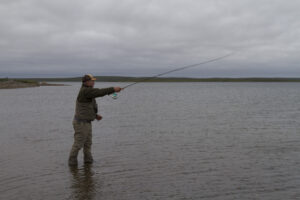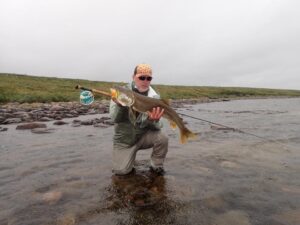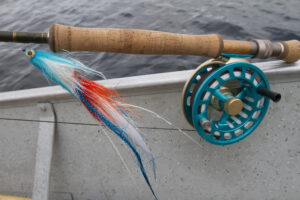5 Tips to Prepare for a Fly-Fishing Trip Up North
Practice your casting. Work on picking up 30 feet of line, making few false casts, and putting in down accurately in front of you. …
Start walking. This will help if you are going to fishing. …
Check your gear and see what needs to be replaced. …
Fill your fly boxes. …
Purchase Global Travel Insurance.
The pleasures of a remote fly-fishing trip are many, including pristine arctic waters, lots of cooperative and plentiful fish, and good company (or no company at all, if that’s your thing).
We tell clients always bring multiple fly rods, and keep them in cases during transport, including in the boat. Fly rods are just too easy to break, especially the delicate tips, thanks to screen doors, along the trail, getting stepped on and, once in a while, big lake trout. If you don’t have a backup rod, borrow one or buy an extra rod and sell it after the trip. It’s that important. There is not a lot of places to buy good fly fishing equipment in Yellowknife so bring it with you.
Floating lines are always essential, as are sinking lines because they open up a lot of fishing options, especially if you’re sharing a boat with spin anglers who might want to target deeper water. Bring spare reel spools and some sinking leaders, which easily fit in your pocket.
Finally, you can never have to many leaders and tippet material. I tell clients to bring two spools of every pound test you want to use.
Flies
Barrenlands lake trout or arctic grayling are rarely fussy about fly pattern but have a variety of good colours. If you get an edible-looking, appropriately sized fly in front of them, they’re likely to bite. I tell clients to always stock a couple of fly boxes with a small variety of generally imitative patterns in basic dark, light and bright colours, in a range of sizes.



